Top Image: In Bayeux, France, Regine Binet received a CARE Package from an American, whom she had never met. Photo courtesy of CARE.
Most of us who have spent a summer at camp or gone away to college have received a care package. Usually full of candy, junk food, or other favorites, these packages are full of luxury items, a token of love and care from family or friends. For untold numbers of families in Europe, care packages sent after the end of the war were literal lifesavers, sent not only by family or friends, but from strangers in America.
When the victory celebrations ended in Europe, most civilians there returned to a stark reality: hunger. The devastation of six years of war left millions of individuals teetering on the brink of starvation. Globally, an estimated 20 million people died of malnutrition during the war, more than had fallen in combat. Not only were those who had been imprisoned in various types of camps severely malnourished, but the general populations of nearly every European country faced a food crisis. By early 1945, there was a famine in the Netherlands, and the United Kingdom, though better off than many nations, did not see a total end to rationing until 1954. Millions of people would need food assistance for years to come, and they received it through CARE Packages.
In 1945, Arthur Ringwald and Dr. Lincoln Clark approached 22 American charitable organizations with the idea of creating a non-profit corporation to send food packages to Europe. Searching for a name that made a sensible acronym, Clark’s wife Alice suggested “Cooperative for American Remittances to Europe”—CARE. A perfect acronym that instantly convoyed the mission of the organization—providing care to those who needed it. Incorporated in November 1945, CARE first needed food to send.
For months, the US military had been stockpiling supplies that would be needed for the planned invasion of Japan, Operation Downfall. With the use of the atomic bomb ending the war before such an invasion was necessary, the US Army had a huge supply of rations that could never be used. The leaders of CARE approached the Army and were able to acquire nearly 3 million surplus rations known as “10-in-1.” Designed to feed 10 men one day of meals, these robust rations included a variety of items otherwise almost unavailable in some parts of Europe. With almost 3 million rations in their inventory, CARE began to package the items for shipment to Europe. What became known as CARE packages evolved over time, but the first packages included:
- one pound of beef in broth
- one pound of steak and kidneys
- eight ounces of liver loaf
- eight ounces of corned beef
- 12 ounces of luncheon loaf (like Spam)
- eight ounces of bacon
- two pounds of margarine
- one pound of lard
- one pound of fruit preserves
- one pound of honey
- one pound of raisins
- one pound of chocolate
- two pounds of sugar
- eight ounces of egg powder
- two pounds of whole-milk powder
- two pounds of coffee
In April 1946, the first 15,000 CARE Packages were loaded onto a ship in Philadelphia, where the packages had been assembled. On May 11, 1946, these lifesaving boxes arrived in the French port city of Le Havre. As the packages were unloaded at the port, Dr. Clarke, one of CARE’s founders, was there to witness the historic moment. The packages immediately made an impact in the lives of French citizens who had for years seen their food supply dwindle as German and Allied forces fought across the country. These first 15,000 boxes were just the beginning of the major impact CARE was to have in Europe.
-

Some of the first CARE Packages being unloaded in Le Havre, France. Photo courtesy of CARE.
-

In La Havre to see the arrival of the first packages was CARE cofounder Dr. Lincoln Clark, left. Clark wrote of the experience: "Block after block does not have a building standing. Thousands were made homeless and injured and lost their jobs. The major difficulty is the loss of the breadwinner by death or disability. [But] I distinctly had the first impression that all of the families I visited will somehow get back on their feet. They were all incredulous to be receiving a package.” Photo and quote courtesy of CARE.
The success of CARE Packages was swift. By the end of 1946, CARE was delivering packages in 10 countries in Europe. As the supply of rations ran out, CARE partnered with American food companies, sending well-known brands like Domino Sugar and Del Monte raisins. Americans could purchase a CARE Package for $10 (the equivalent of $143 today) to be sent to an individual or family they knew. However, so many wanted to help that CARE began to be flooded with purchases to be sent to recipients such as “a hungry occupant of a thatched cottage.” CARE promised to deliver all packages within four months, even without a current address. In 1947, some CARE Packages included a special note that then-Princess Elizabeth, on the occasion of her wedding to Philip Mountbatten, had purchased a number of CARE Packages to be delivered to recipients in the United Kingdom.
-

Both friends and former foes needed aid. In England, the Killagllon family receives a CARE Package. Photo courtesy of CARE.
-

In the rubble of Berlin, Germany, a family takes a CARE Package home. Despite years of war, Americans did not hesitate to purchase CARE Packages for German families. Photo courtesy of CARE.
CARE Packages provided not only much needed food items, but also coffee and chocolate, things that were considered luxury items after years of deprivation from the war. The importance of the boxes was not only that they provided desperately needed food, but that they brought with them a sense of hope and care. Packages included a return notice that allowed senders to know their package was received, and by whom, connecting strangers across an ocean. A package sent from America to a family in Germany brought with it a sense of healing, of moving forward. Some packages even resulted in greater life changes. In 1947, a young American GI sent a package to the family of a young German girl he had met and begun to correspond with. The next year they were married.
The popularity of the CARE Package program grew quickly in the early postwar years. President Harry S. Truman donated to CARE fundraisers and purchased 100 Packages. Hollywood stars, like Douglas Fairbanks, Jr., participated in advertisements and fundraisers. During the Soviet blockade of Berlin in 1948-1949, 250,000 CARE Packages were part of the Berlin Airlift—60 percent of the food relief sent to Berliners. When the blockade ended the next year, CARE trucks were the first vehicles allowed in, bringing much needed supplies. Over time, CARE Packages evolved, with foods selected to better suit national tastes, such as British packages containing tea instead of coffee, and even Kosher packages.
-

In Philadelphia, later CARE Packages were carefully packed with not only vital, nutritious food, but also chocolate and other items which many young people in Europe had never had. Photo courtesy of CARE.
-

In Greece, a grandmother cooks a meal for herself and her orphaned grandson, made possible by a CARE Package. A healthy, warm meal not only nourished bodies, but brought hope to people who had suffered for years from the war. Photo courtesy of CARE.
CARE expanded into Japan in 1948, and continued to grow, setting up facilities worldwide in places like India and Mexico. Additional package options were created to include non-food items like carpentry kits, knitting materials, and books. By the mid-1950s, packages to Europe decreased, but CARE continued to expand around the world. This year, CARE celebrates the 75th anniversary of the first CARE Package deliveries to Le Havre, France, and 75 years of providing hope and essential goods through CARE Packages and other initiatives in more than 100 countries.
In celebration of 75 years of CARE, the organization has virtual events planned throughout the year. To learn more about the work CARE is doing today visit www.care.org.
This article is part of a series commemorating the 75th anniversary of the end of World War II made possible by the Department of Defense.
Kali Martin
Kali Martin is a former Research Historian of The National WWII Museum's Jenny Craig Institute for the Study of War and Democracy.
Cite this article:
MLA Citation:
APA Citation:
Chicago Style Citation:
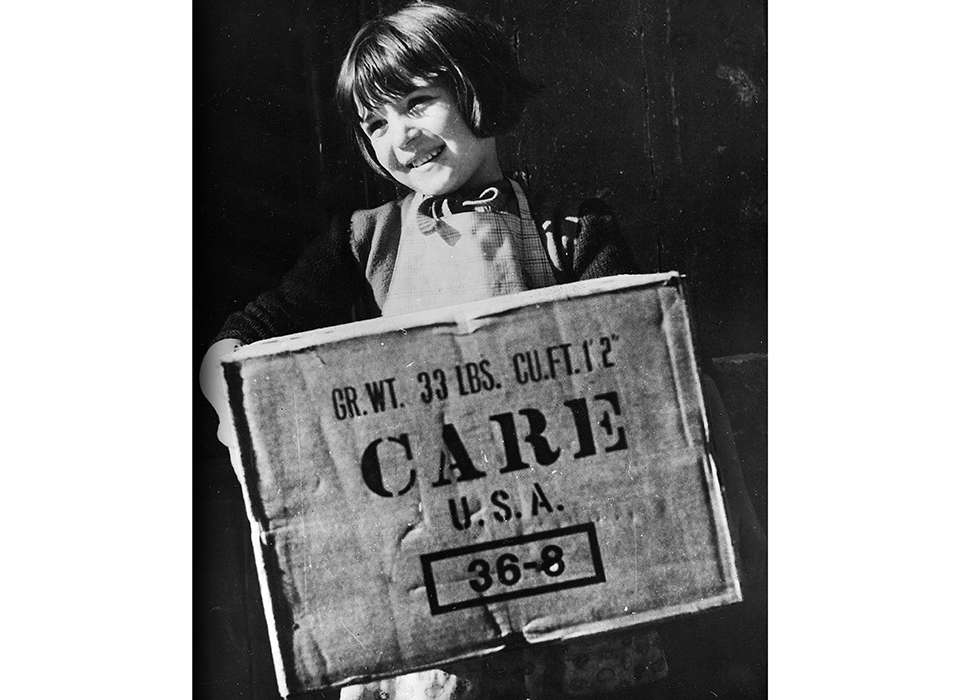
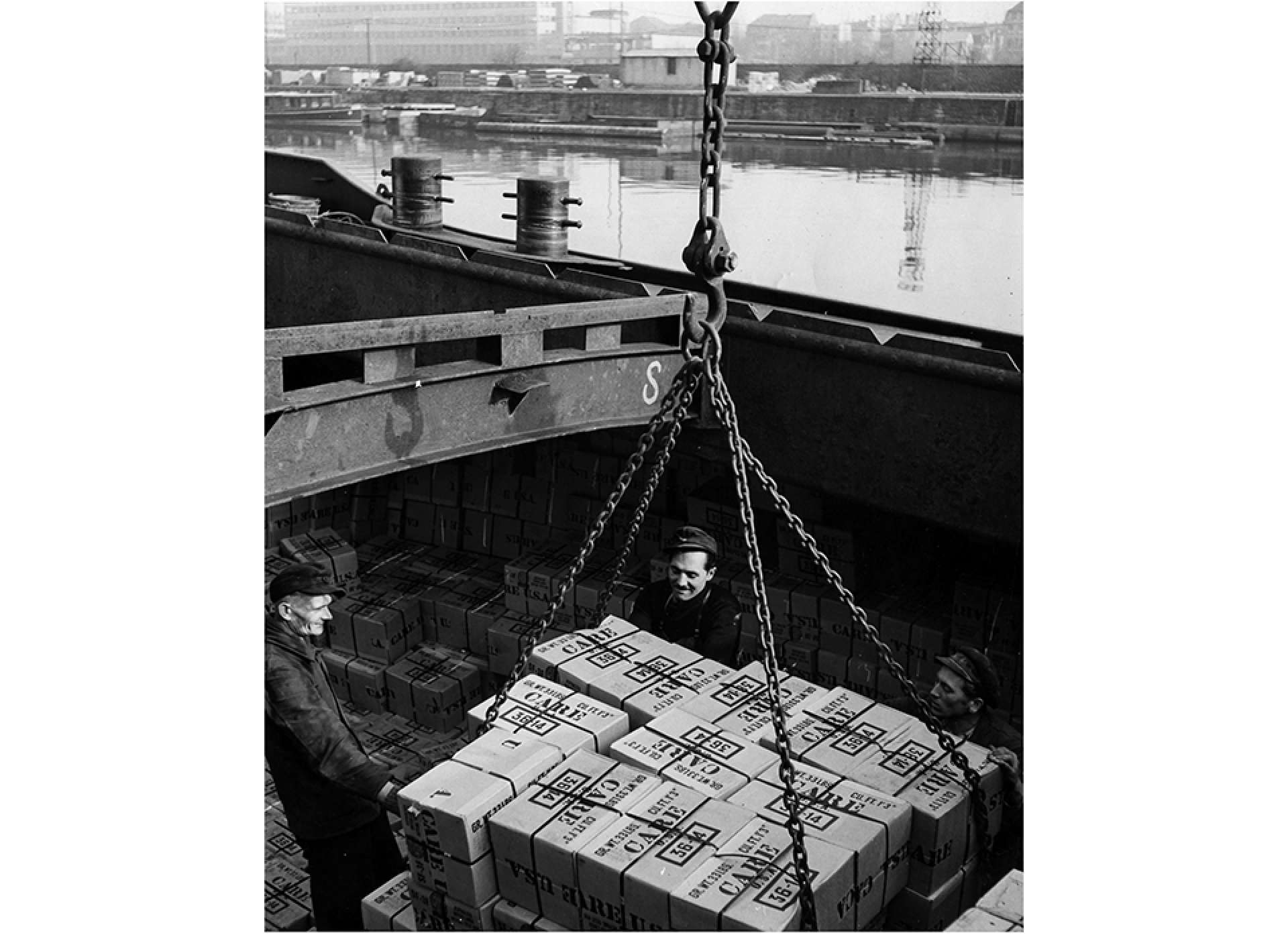
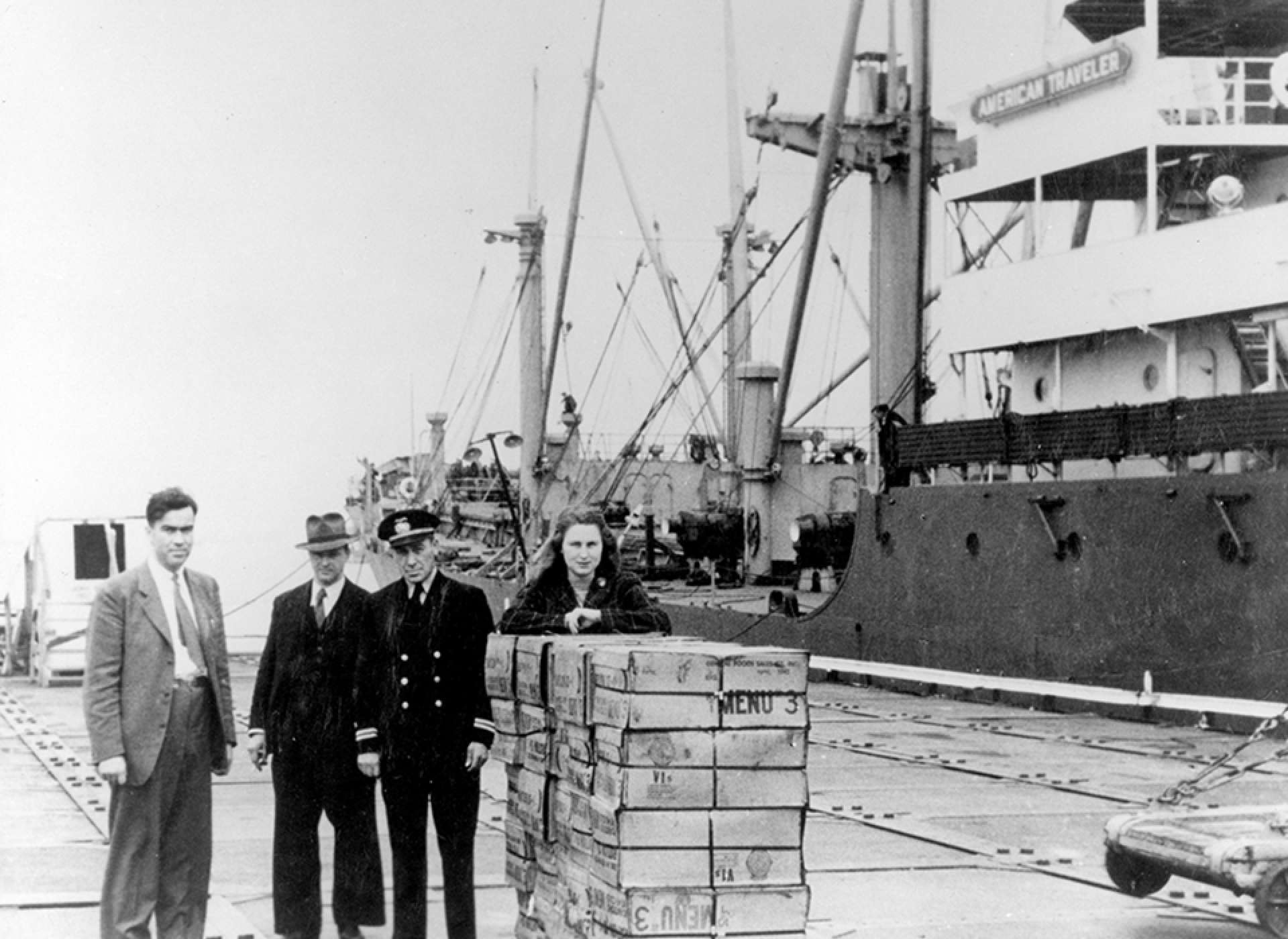
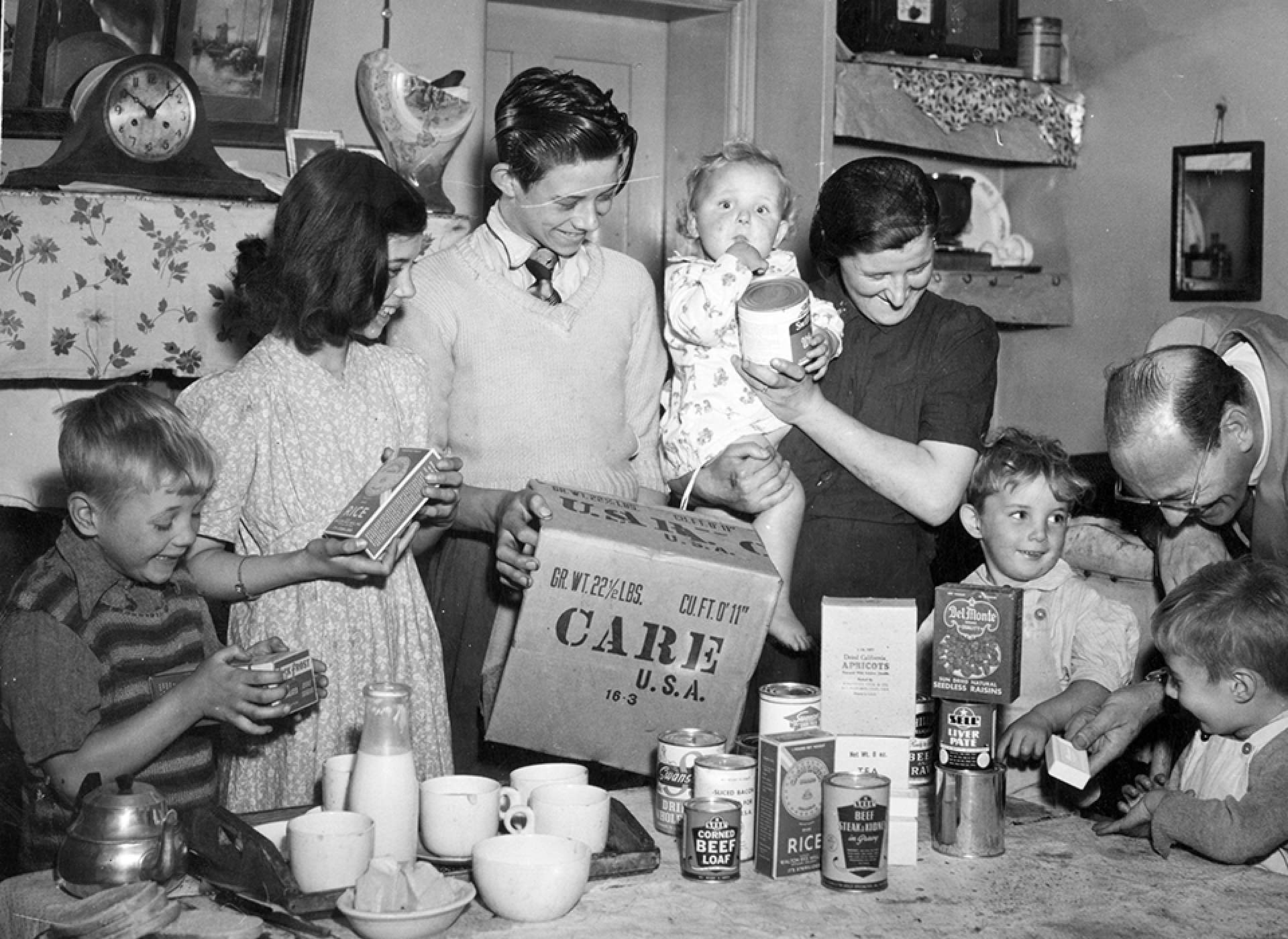
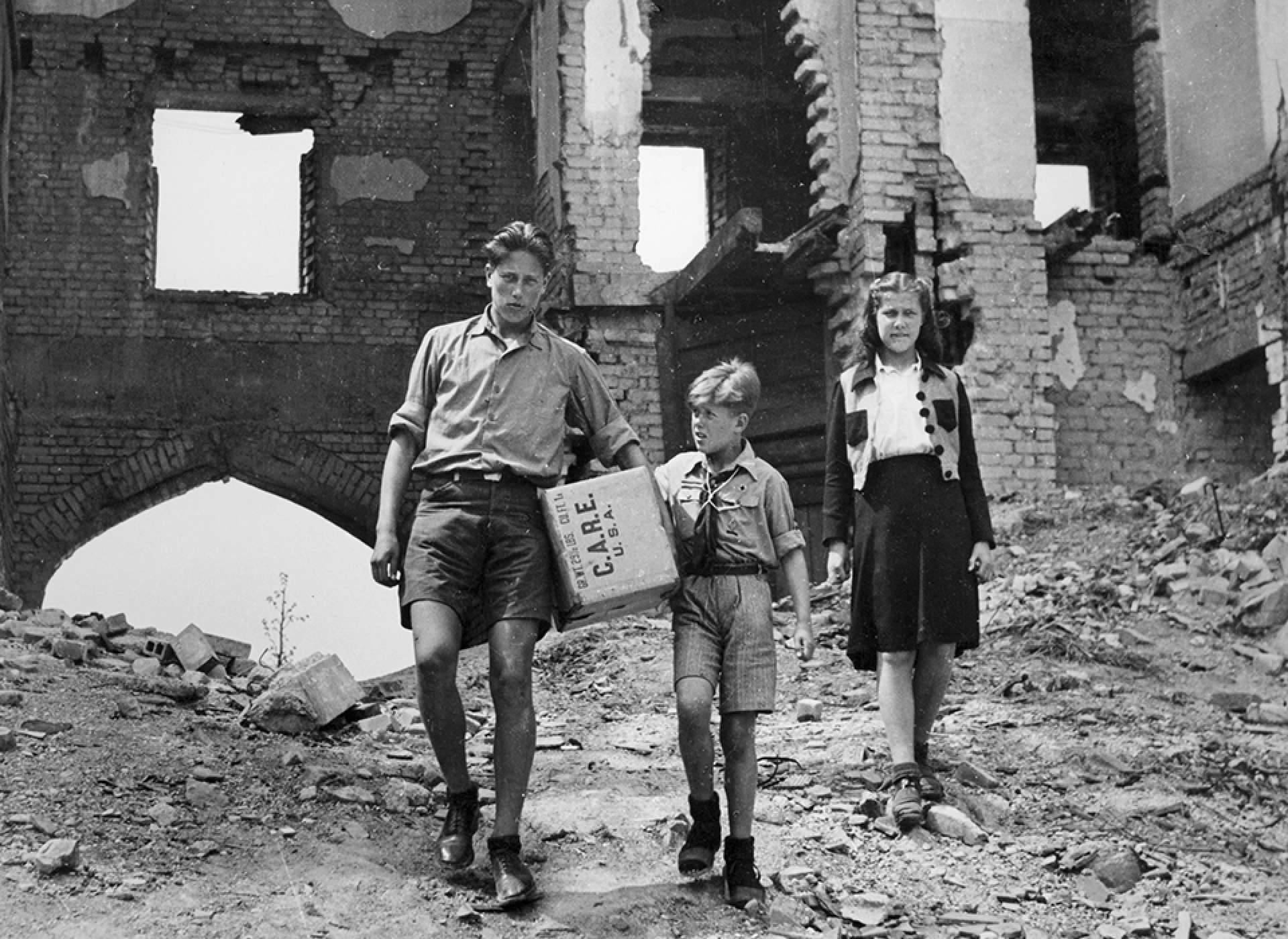
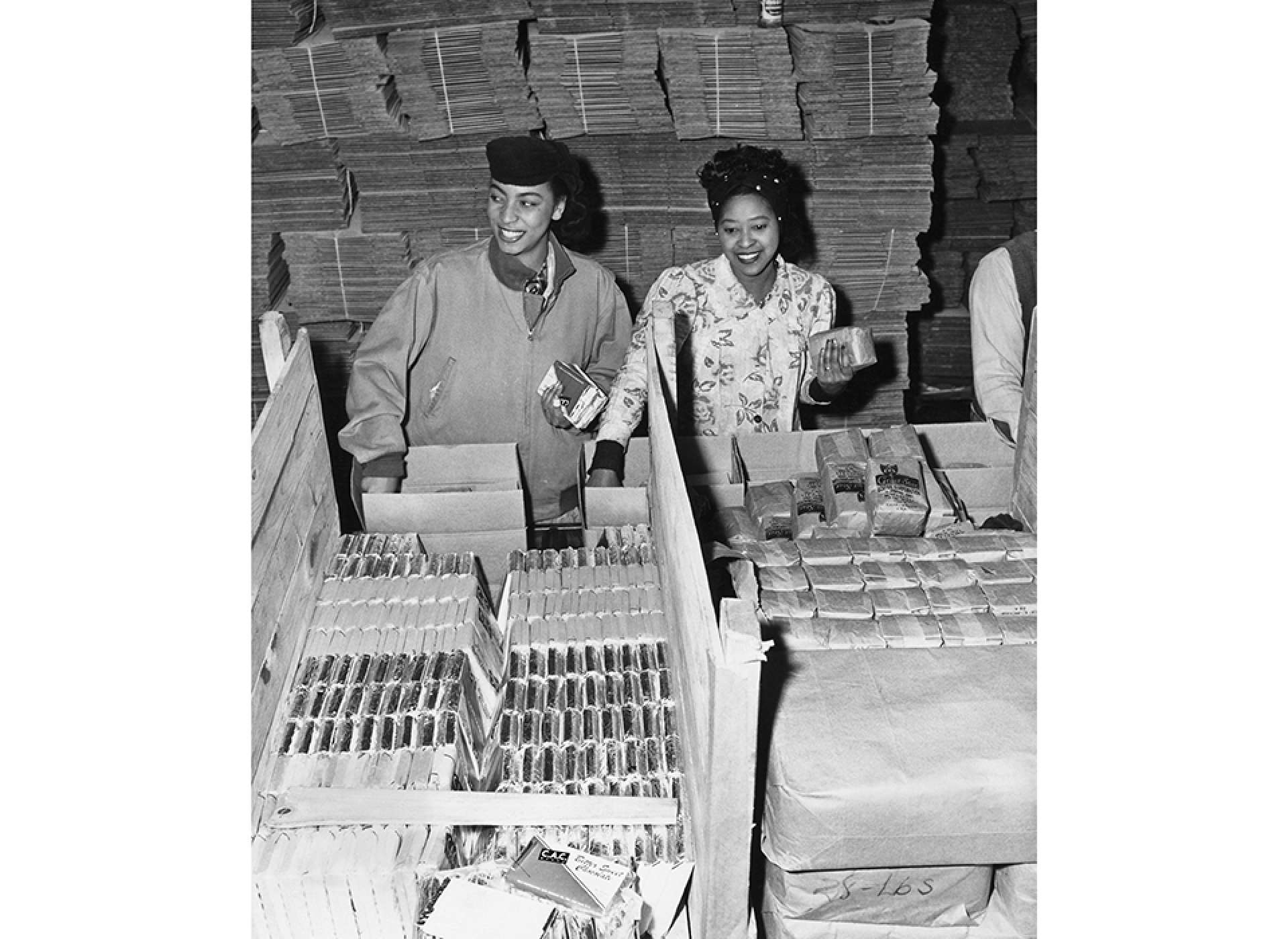
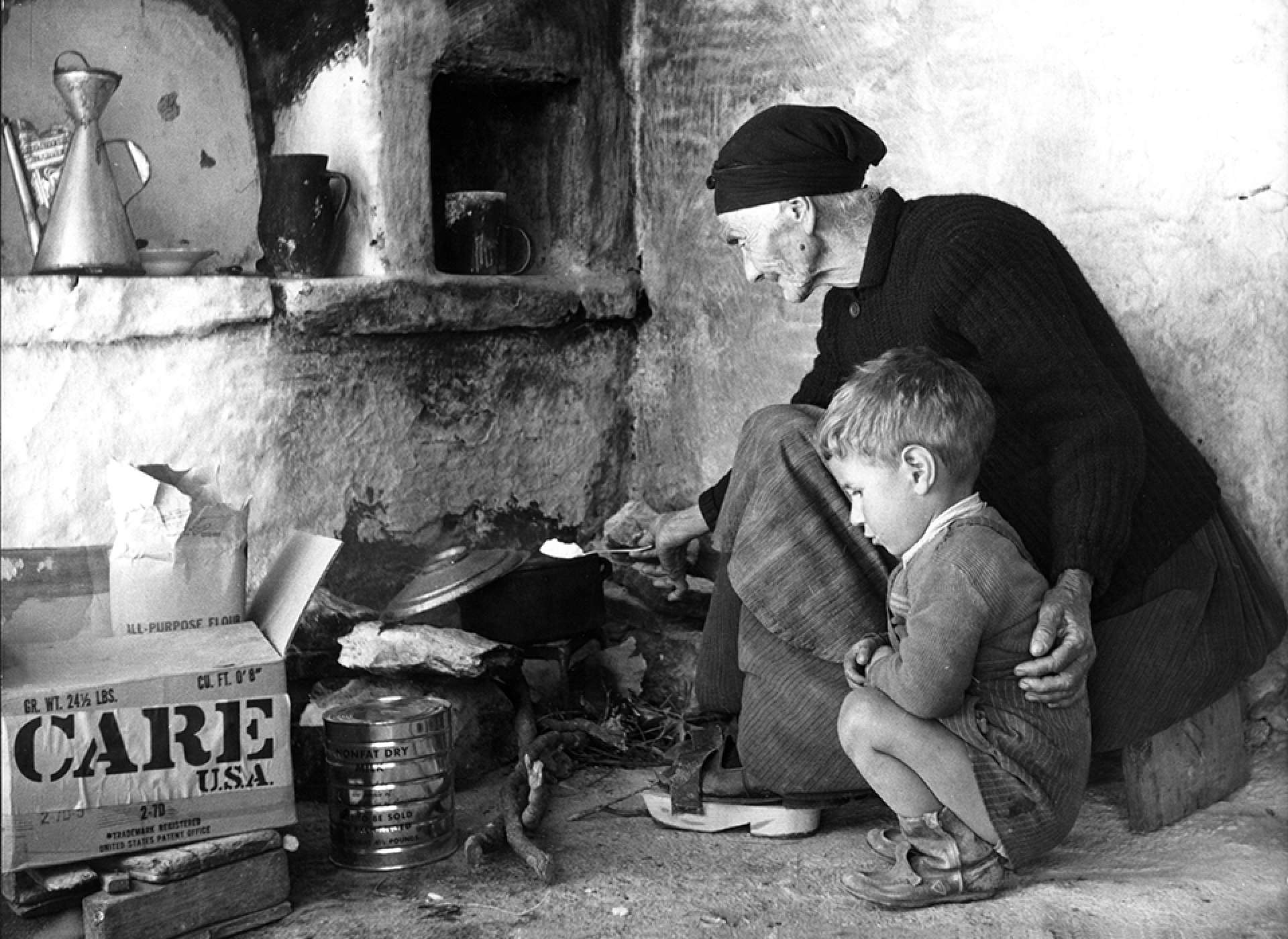
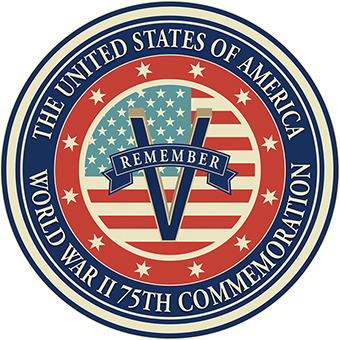
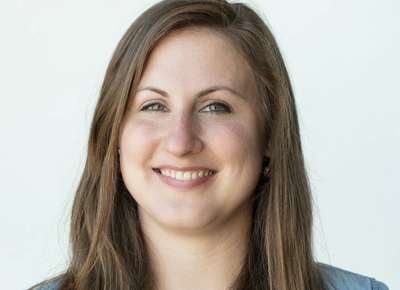



![Max Fuchs, New York City cantor, sings as Rabbi Sydney [sic] Lefkowitz, Richmond, VA, conducts the first Jewish services from Germany.](/sites/default/files/styles/max_650x650/public/2025-10/image1.jpg)



